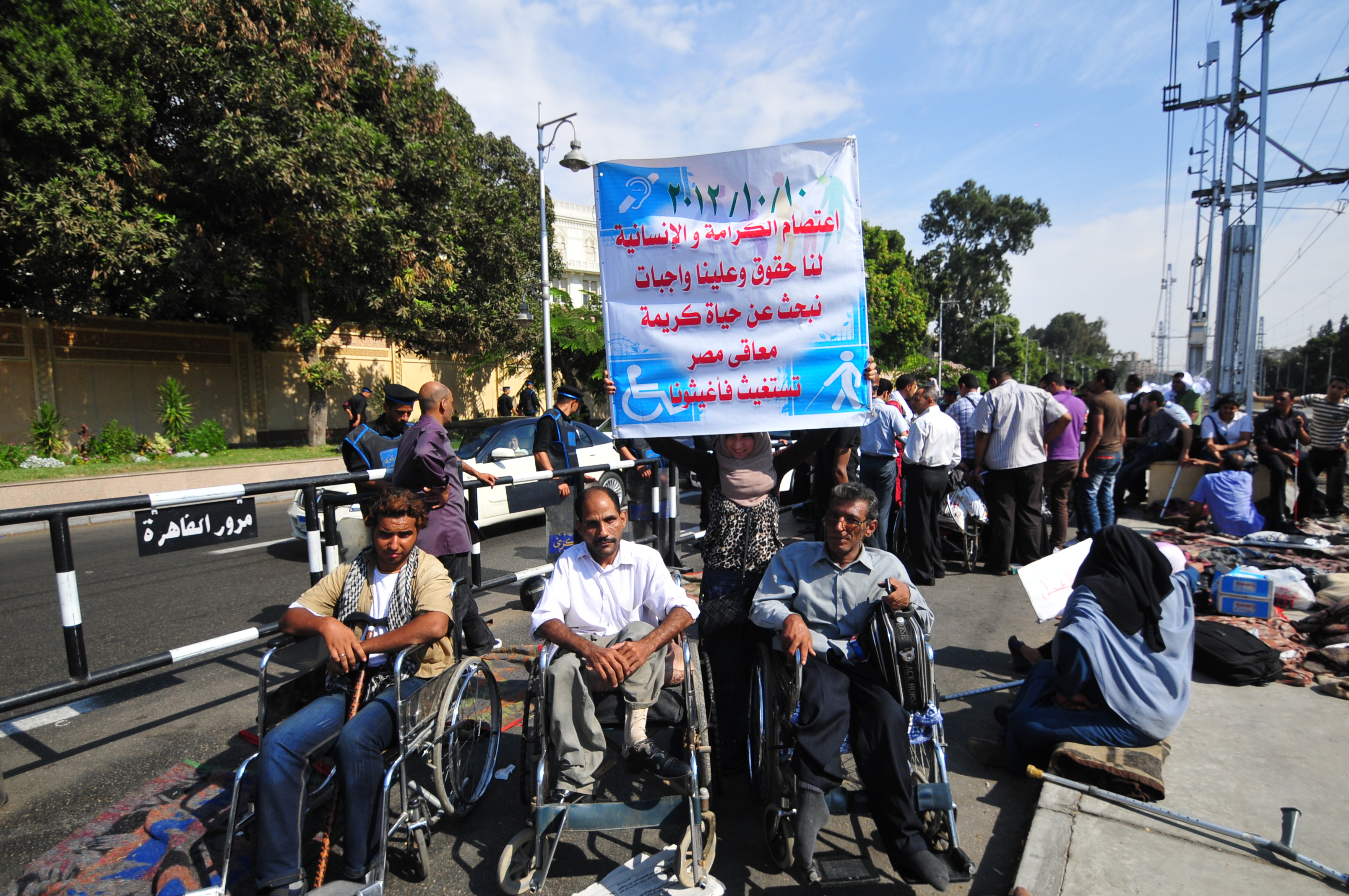
Eight hundred and sixty two souls, the official count of the dead of the 25 January Revolution, are in divine hands now. In a unified voice they ask: we died for this? An SUV carried Gamal and Alaa Mubarak for a sumptuous welcome home dinner, a mere sixty hours before the fourth anniversary of a revolution that time has proven to be more uprising and less revolution.
The fact that the children of a man who slowly murdered a nation of millions, usurped much of its wealth, and abused the power of the presidential office spent last night in regal beds, while honourable revolutionaries slept in unheated prison cells, speaks volumes of an uprising gone astray. Where unencumbered dreams walked the asphalt of Tahrir Square now only tanks of the true rulers of Egypt are to be found.
This is the dark reality. This is the Egypt of Tantawi, SCAF, Morsi, Adly and Al-Sisi. Little did anyone know we would leave one nightmare behind only to have the dream of revolution besmirched with the paint brush of Machiavellian manoeuvres. To tell the tale of a revolution dishonoured is a painful necessity on the road to political maturity.
Many analysts, both Egyptian and western, have penned numerous accounts attempting to deconstruct the failure of the Egyptian uprising, but what some gain intellectually they lack in emotional mapping of the Egyptian Zeitgeist. To understand today’s pungent pain you must absorb the degree of yesterday’s hope.
For years preceding the historic day, there had been demonstrations, some by Kefaya yet others by 6 April, but at their zenith they generally didn’t exceed hundreds and were usually counted in the tens. But the call for 25 January had been well advertised online, and well organised on the ground by experienced activists and a strong network of alliances and contacts. Nonetheless, expectations, even those injected by passion and anger, couldn’t fathom anything more than a few thousand demonstrators materialising.
But uprisings are convective thunderstorms of anger and emotion and divorce reason on the way to faceoff with the very system enslaving the down trodden. As the sun found its way to its centre point in the sky, tens became hundreds instantly and to the surprise of all, not least of all the government and the uprising’s organisers, hundreds quickly became thousands. On that day, despite government’s best efforts to the contrary, the deaf would hear the moans of tens of thousands marching in Cairo to denounce everything about a system pressing against their proverbial chests for thirty years. This time, those in the balconies, watching the demonstrations grow in size and power, and descended to the streets. Men, women, girls and boys, activists and laymen alike, stood chest to chest with the regime’s brutal security apparatus on 28 January, Friday of Anger.
One stood and the other ran. Doing the running were those possessing the guns. No moment captured the breaking of the mold of stultifying fear more than when a young man stood, singlehandedly, chest puffed out, against a behemoth of a police APC, armed with a powerful water cannon, to protect hundreds of fellow protesters running behind him. In the background of the video recording, you could hear an Egyptian couple, standing in their balcony, predicting the coming attack by tens of police led by that APC. When the realisation that this noble fellow Egyptian was willing to surrender his life in an instant for them hit home, they exploded: “Brave one, what a man…what a man.” The flower of uprising was watered with the blood of many martyrs on that day.
There would be many other face-offs with the regime in the days to come, most famously an iconic faceoff on Cairo’s most famous bridge Qasr Al-Nil and a few days later the Battle of the Camels. The dead would fall and so would the injured by the thousands, but the people rose. When an ashen Omar Suleiman, Egyptian VP at the time, would announce, in the evening of 11 February 2011, the departure of Hosni Mubarak, the sigh of relief and the sounds of celebration could, seemingly, be heard across the oceans.
The celebration heard and seen around the world would not last. By the time Mohamed Morsi would rise to power, a mere 16 months later, Egyptians, and particularly the revolutionary class, would be doused with barrels of ice cold, realpolitik, water. First came the many clashes with the Supreme Council of Armed Forces (SCAF) leaving many dead and injured, a phase that saw many Egyptians in the vice of military trials. Followed, the depression creating reality of an Islamist reign that, four months later, showed cynically dictatorial instinct when Morsi attempted to arrest power from a highly questionable judiciary through a supra-constitutional coup.
Ultimately, this led to 30 June, initially thought by many to be a revolution to rid Egypt of Muslim Brotherhood rule, a coup that gave Egypt more martyrs in one day, nearly a thousand, than an uprising of 18 days would. Long before Abdel Fatah Al-Sisi would come to power, within the space of 20 weeks, 2665 Egyptians would be dead, according to the highly respected Wiki Thawra.
Months into the Al-Sisi reign, many things are clear but, chief among them, is the fact that Al-Sisi’s public smile is but a veneer to a draconian instinct that has seen torture and rape return as a methodology of communication with many dissidents. As of nine months ago, the number of political prisoners had exploded to over 41,000, far outpacing statistics for the Mubarak 30 year tenure, and has, in all likelihood, risen since. The very protests that brought back the army to rule, embodied by Al-Sisi, are now illegal by a sinister protest law meant to combat all opposition, both Islamist and ‘liberal’.
Indeed, many of the very same activists like Alaa Abdel Fatah, Ahmed Douma and Ahmed Maher call prison home now. The pretence has been eschewed, and in a shock to the system of many revolutionaries from varying political stripes, the counter revolution has come to the presidential palace with bayonet atop its shoulder; no less stunningly, with massive public support.
In more traditional parts of Egypt, families do not accept condolences or hold a funeral until the blood of their kin has been vanquished. There can be no doubt that the ruling cadre has gone about systematically killing any semblance of the spirit of 25 January. But rationale dictates that revenge is not the solution. The Middle East is strewn with nations exploding with violence and imploding with division, sectarian and otherwise, and it is a person with more than their share of stupidity who believes that violence is the answer.
But truer words cannot be spoken: the current situation is an untenable one. Should Al-Sisi continue to press his army boot against the chest of a people, full of hope four years ago, it will not take another four years before another explosion ensues. The problem, from this vantage point, is two-fold. On one side of the analytical ledger is a leadership devoid of an ability to learn from history, both short and long term.
On the other, is an opposition that is both disjointed, in jail and highly divided with Islamists on one side and the 25 January camp on the other. As we shed a tear for those who perished for a dream that has turned nightmarishly dark, those in the revolutionary camp, must awaken from the state of shock and revolutionary fatigue that has enveloped them.
In blunt terms, the alternative, without political solutions, organisation and a semblance of unity will not merely be military rule, blood and dictatorship. When you look back fondly, in coming days, understand that what has passed is a mere hand grenade to the future’s hydrogen bomb of anger percolating beneath the mirage of a stable veneer.
Amr Khalifa is a freelance journalist recently published by Ahram Online, Tahrir Institute, Muftah and Mada Masr



